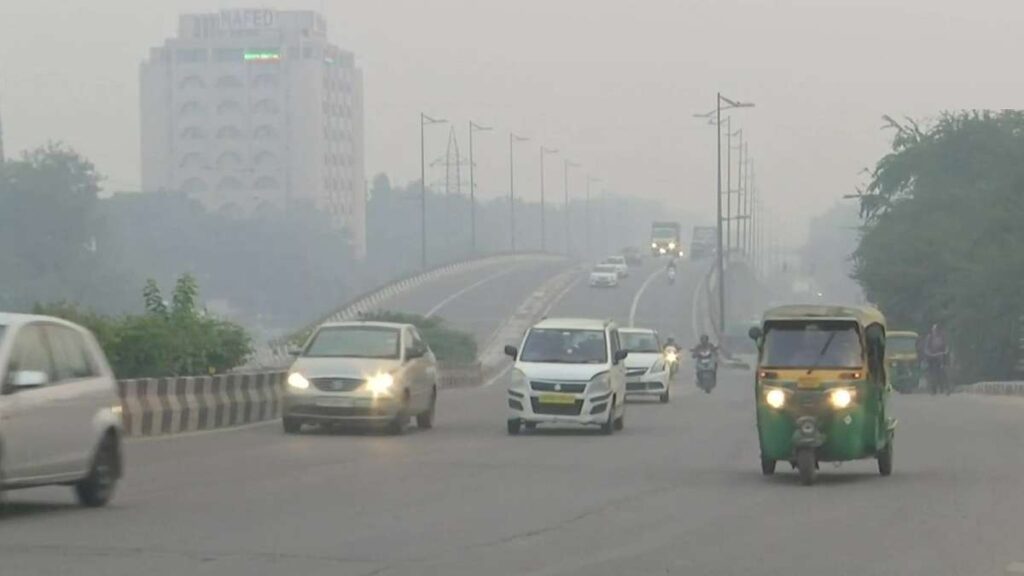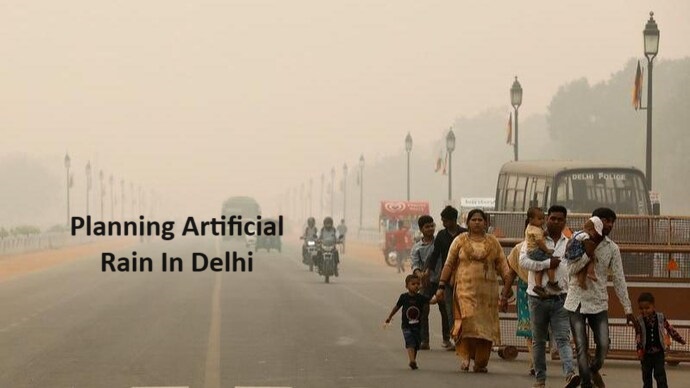Artificial Rain
In the relentless battle against escalating air pollution, cities worldwide are turning to innovative solutions, and artificial rain, or cloud seeding, is emerging as a promising strategy. This article delves into the intricacies of artificial rain, its applications, and its potential role in alleviating air pollution, with a focus on recent developments in urban areas like Delhi. As metropolitan regions grapple with deteriorating air quality indices, exploring unconventional methods such as artificial rain underscores a commitment to finding effective solutions for cleaner, healthier environments.
Understanding
A technique rooted in cloud seeding, involves the introduction of specific substances into clouds to stimulate the formation and subsequent precipitation of rain. Common seeding agents include silver iodide, potassium iodide, and calcium chloride. These substances serve as nuclei around which water droplets aggregate, ultimately leading to the formation of rain. While the concept of cloud seeding has been employed for several decades, its recent application to combat air pollution is gaining renewed attention.

How Artificial Rain Mitigates Air Pollution:
The efficacy of artificial rain in addressing air pollution lies in its dual-action mechanism. Firstly, the process aids in settling particulate matter and pollutants suspended in the air. As raindrops form around the introduced seeding agents, they encapsulate pollutants, effectively purifying the atmosphere as they descend to the ground. Secondly, the increased moisture resulting from it contributes to reducing dust and other airborne particles, providing a temporary respite from hazardous pollution levels.
After six years of effort, #IITKanpur has successfully conducted #cloudseeding to create artificial rain.
— The Better India (@thebetterindia) November 9, 2023
Watch how they did it!#ArtificialRain #IIT #Experiment #Sustainable #Pollution #stubbleburning pic.twitter.com/5PTjeuTwzw
Delhi’s Venture into Artificial Rain:
In response to its persistent air quality challenges, Delhi has recently embarked on a venture to explore the effectiveness of artificial rain in curbing pollution. Reports indicate that light rains induced through cloud seeding have had a discernible impact on air quality. The added moisture facilitates the dispersion and removal of pollutants, offering a brief reprieve from the perennially severe pollution levels that plague the city.
Challenges and Considerations:
While the potential benefits of artificial rain are noteworthy, it is imperative to acknowledge the challenges associated with this technology. The effectiveness of cloud seeding is contingent on various factors, including cloud type, ambient temperature, and the presence of suitable seeding materials. Additionally, the introduction of certain substances into clouds raises ecological and environmental concerns, necessitating careful consideration and comprehensive studies to ensure minimal adverse effects.
The Future of Artificial Rain as an Air Quality Intervention
It stands at the intersection of technological innovation and environmental sustainability, offering a glimpse of hope in the struggle against urban air pollution. While its immediate impact provides relief, the long-term viability and ecological implications require thorough examination. Continued research and refinement of cloud seeding techniques, coupled with a holistic approach to urban environmental management, will be pivotal in maximizing the efficacy of artificial rain as a tool for sustainable air quality improvement.
In the quest for cleaner urban environments, it emerges as a dynamic and innovative strategy to combat air pollution. Delhi’s experimentation with this technology signals a proactive approach to tackling the severe challenges posed by hazardous air quality. As cities worldwide seek comprehensive solutions, the role of artificial rain in mitigating pollution underscores the necessity of embracing unconventional approaches in the pursuit of healthier and more sustainable urban living.
The journey towards cleaner air is multifaceted, requiring a harmonious blend of technological interventions, environmental considerations, and public policy initiatives. Artificial rain, in conjunction with broader strategies, holds promise as a crucial component in this collective effort to build urban spaces that prioritize the well-being of residents and the planet.

